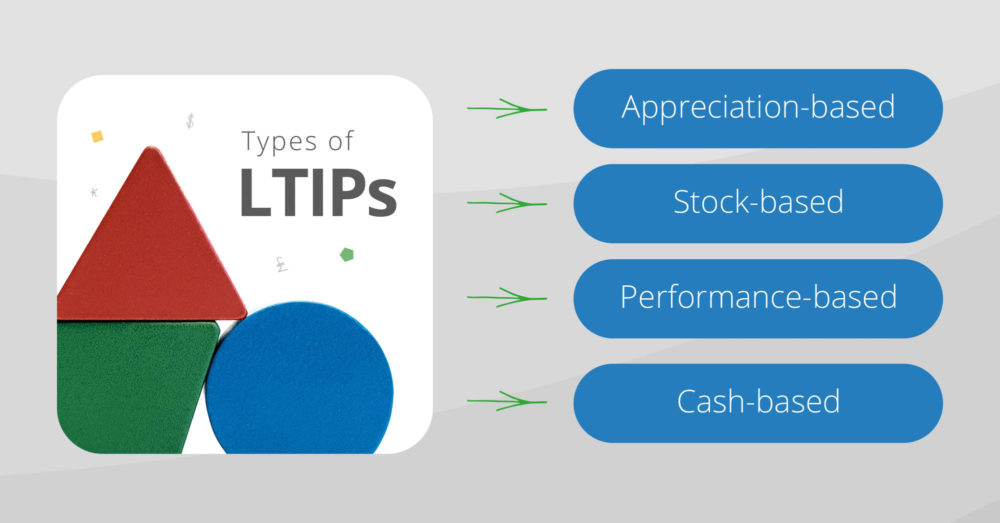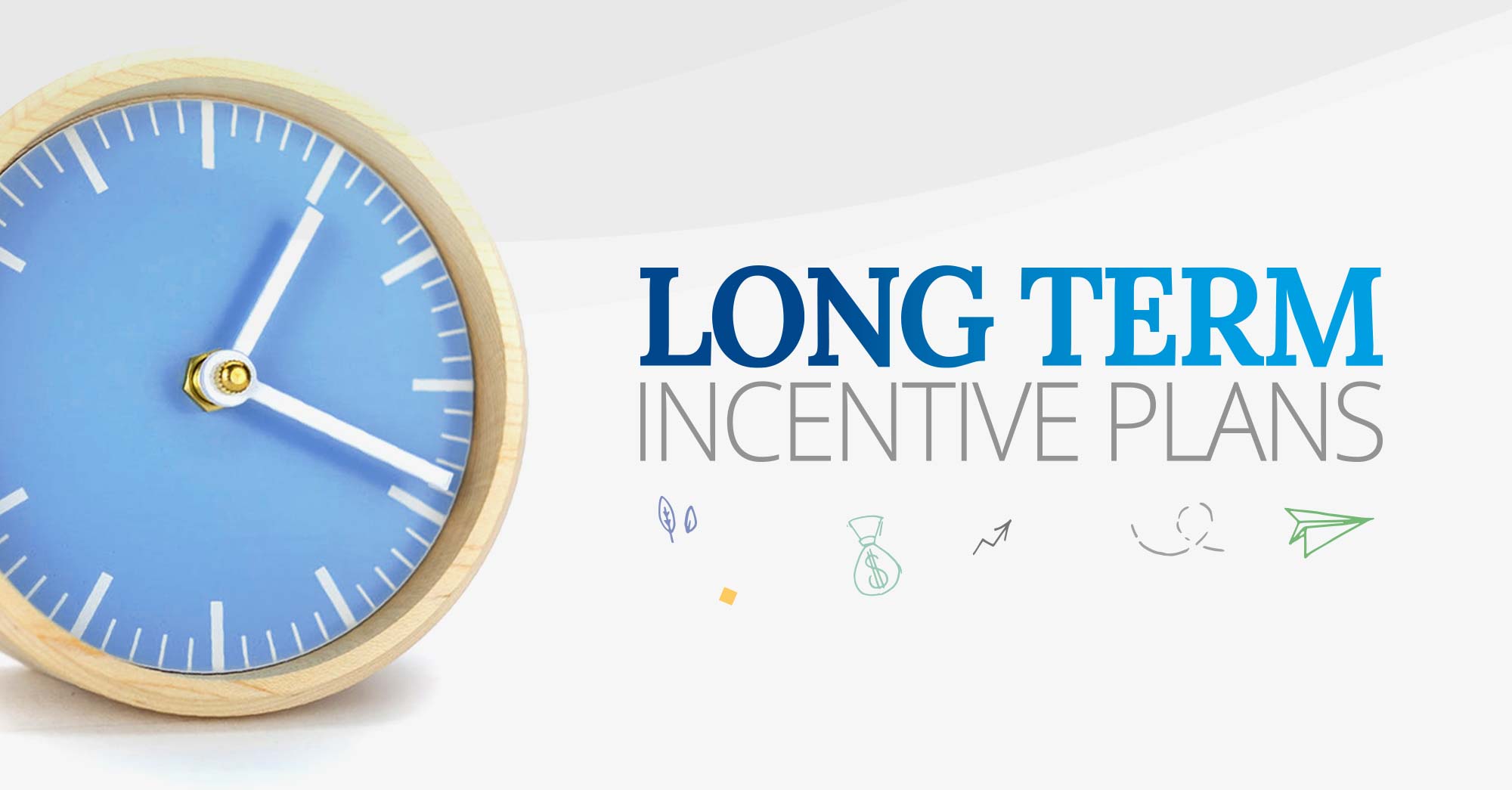What is a long-term incentive plan (LTIP)?
A long-term incentive plan (LTIP or LTI plan) is a deferred compensation strategy to attract, reward and motivate your employees, while also helping your company to retain valued talent and grow.
An LTI plan comes in all sorts of shapes and sizes – here’s a simple guide to help you find the best long-term incentive plan design that suits your company.
How does an LTIP work?
An LTIP works by rewarding employees (usually senior employees) with cash or shares of company stock (see more here) for meeting specific goals. The goals are usually long-term, running for 3-5 years to stimulate ongoing progress rather than a-few-months objectives.
Unlike short-term incentives, LITPs have a built-in retention feature to encourage employees to stick around to receive long-term awards.
Who can get LTIPs?
LTIPs are basically eligible for all employees but are most often reserved for executive- or officer-level and above whether it’s a private or public company. However, because of their liquidity, private companies’ long-term award opportunities for their key employees are about 50% less than public companies.
Why do companies use LTIPs?
LTIPs are a win-win deferred compensation strategy for both employers and employees:
– Focus on long-term profits/benefits: Short-term profits are great but can come at a cost. Oftentimes, they come at the expense of customer relationships and are unsustainable.
LTIPs, however, can align your company’s interests with the interests of your employees over a long period of time. They’re not only trying to hit targets for this year, but also moving the company forward to sustain its growth in the long run.
– Encourage employees to remain with the company. With LTIPs, you show your employees the most important areas to effect continuous growth and their long-term pay holds them accountable for implementing it over the next couple of years.
– Save time and money on hiring senior employees. Employee turnover can be an unnecessary black hole for your profits – according to studies when a business replaces a salaried employee, it costs six to nine months’ salary, on average, to train their replacement.
This is more of an issue these days when most employees only remain with a company for an average of two years.
Talk to us today to establish an LTIP that fits your business’s interests and philosophy.
CONTACT BLOCK
Different types of long-term incentive plans
There are essentially four different types of long-term incentive plans.

| Appreciation-based award | Time-based award | Performance-based award | Cash-based award | |
|---|---|---|---|---|
| Meaning | Its value depends on how much the company’s value increases over time | Only available to employees after a certain amount of time in the company | Only available to employees after meeting certain goals, rather than time | Given to employees as a cash bonus |
| Examples | Stock options | Restricted share units (RSUs)* | Performance share | Cash Bonus |
*RSUs are frequently used in an LTIP (Source: Gov.UK)
Which one is right for you?
Depending on your industry and your jurisdiction, your company might be better suited to one of these. So, it’s important to understand the positives and negatives of each one.
Appreciation-based awards (e.g. options)
✓ PRO: Appreciation-based awards can have massive monetary upsides for employees in the case of company stock price appreciation, particularly in startups and growing companies.
✓ PRO: This type of award is also very flexible. You can decide when and how often your employees receive the awards by customising the vesting period (i.e. waiting period before receiving 100% award ownership). Check out our ‘’What is stock vesting? ’’ guide to design the best vesting schedule for your needs.
✓ PRO: Employees usually don’t need to pay for their SARs when they’re available after vesting. It means they just simply receive the awards without paying upfront.
✖ CON: Employees, however, need to pay for their stock options at the pre-set price (exercise price) when they decide the exercise (purchase) their options after vesting. They profit by ‘buy low sell high’
✖ CON: There is a risk with these awards, e.g. they can potentially be worthless when their value drops below the exercise price (i.e. underwater stock option)
Time-based awards (e.g. RSUs)
✓ PRO: Time-based awards have similar positives, but a time-based full-value award such as RSU is guaranteed to have positive value as no upfront payment is needed. So RSUs are considered less risky than stock options.
✓ PRO: They also have a vesting period, which means you can customise the process of making them available to employees.
✖ CON: Employees cannot control the timing of taxation with RSUs as ordinary income tax is due once they vest. But with stock options, tax is only due when they decide to exercise stock options.
Performance-based awards
✓ PRO: Performance-based awards, on the other hand, ensure that employees are not just waiting for their vesting. In order to receive their bonus, the employees need to hit certain targets. It’s easy to see why this is an enticing plan for companies
✖ CON: However, if the targets are not set correctly and are too hard to achieve, the employees could lose morale as they don’t receive anything.
Cash-based awards
✓ PRO: Cash is the most reliable form of bonus without ownership dilution issues.
✓ PRO: It is a popular LTI award for private companies as they have little liquidity and their share valuation is more complicated.
✖ CON: However, if possible, it’s best to avoid these as cash flow is important to your company’s growth.
✖ CON: Employees receiving cash may not feel as invested in the company as those receiving stock.
Understanding LTIPs and vesting
As mentioned above, vesting is the waiting period before receiving 100% of the LTI ownership. For example, if your vesting period is three years, the incentives will be fully available to you (i.e. you can sell and/or exercise them) once the 3-year period has passed.
There are two common ways of vesting – cliff vesting and graded/ratable vesting.
| Full Year(s) of Service | 3-Year Cliff Vesting | 6-Year Graded Vesting |
|---|---|---|
| 1 | 0% | 0% |
| 2 | 0% | 20% |
| 3 | 100% | 40% |
| 4 | Nil | 60% |
| 5 | Nil | 80% |
| 6 | Nil | 100% |
Cliff vesting: After a certain period of time, the employee receives the entire award. For example, an employee might receive all shares in one go once the vesting period has passed.
Ratable/graded vesting: It occurs when the award vests a portion at a time. For example, an employee might receive one-fifth of their stock each year after the first year over the six-year vesting period.
Vesting is the heart of LTIPs. It’s important to get it right to ensure key employees stay longer. We’ve listed out a number of vesting scenarios here.
An UK long-term incentive plan example
Recently Tesco has granted the Executive Directors and members of the Company’s Executive Committee awards under their LTIP 2021, including^ CEO, CFO, CCO, CTO, and Group Communications Director. (^CCO: Chief Customer Officer; CTO: Chief Technology Officer)
The awards have been tied with performance targets. The shares will vest subject to the achievement of the Earnings Per Share, Free Cash Flow, and ESG performance targets.
A study conducted by Pay Governance showed that UK and EU companies were well ahead of the US in the inclusion of ESG metrics in incentive plans. The research also revealed the prevalence of ESG metrics in incentive plans was expected to grow due to investor and societal pressures.
89% of the UK/EU companies included ESG metrics in the annual incentive and 41% in the long-term incentive. (Source: Pay Governance)
Long-term incentive plan design: Getting your LTIP started
Step 1 – Figure your company goals
As we can see, private companies and public companies have very different LTIP approaches because their goals are different. So, understanding your goals and building a plan around them is one of the long-term incentive plan best practices.
Step 2 – Choose your LTIP design
LTIPs are a very broad category of a compensation scheme. As such, there is a wide range of designs to pick from. There are some considerations when choosing your plan design:
LTI type: Check the last section to compare each incentive’s pros and cons.
Number of LTI types: Public companies tend to use multiple LTIP vehicles.
Vesting schedule: Check the last section
Eligibility: Although LTIPs are often offered to senior employees, some companies offer incentives to all employees. Always consider your company’s goals!
Step 3 – Check your compliance
Compliance is the most important step to consider. Particularly if you have multiple offices in different countries – each of these countries will have its own rules around equity compensation and tax, you will need to find an LTIP that works in all jurisdictions, for all participants.
Global Shares is an expert in managing all LTIP compliance matters. Speak with us to learn more about launching your LTIP in a compliant way.
Step 4 – Communicate your LTIP
You need to communicate the benefits of your LTIP to your participants effectively.
An effective communications plan starts well before your launch. You’ll want snappy, eye-catching designs, mixed with engaging and jargon-free content with examples.
Step 5 – Administer your plan
LTIP administration is a complex and ongoing process. It involves everything from tracking and reporting changes in award ownership to updating documents/policies/procedures, communicating with stakeholders, consulting your board of directors, and staying compliant based on each region your employees are based in.
Fortunately, you could simplify this process by bringing in the right partner, like Global Shares. Have questions about administering your LITP? Click the button below and let us know.
So, what next?
There are a lot of choices and a lot of factors that need to be taken into consideration. We’ve presented a few LTIP design options, and a few of their positives and negatives – but there are many, many more. It’s hard to get all the right answers from reading a blog post.
What you really need is an equity compensation expert, with over 15 years of experience in the field, including LTIPs.
Global Shares can take you through the launch of your LTIP, from the right design to the right vesting – and a whole lot more. Contact us for a commitment-free demo today.
This publication contains general information only and J.P. Morgan Workplace Solutions is not, through this article, issuing any advice, be it legal, financial, tax-related, business-related, professional or other. J.P. Morgan Workplace Solutions’ Insights is not a substitute for professional advice and should not be used as such. J.P. Morgan Workplace Solutions does not assume any liability for reliance on the information provided herein.



![Share Plan Administration Software [+Free eBook]](https://www.globalshares.com/wp-content/uploads/2023/10/stock-plan-administration-software-e1650619914403-17.jpg)